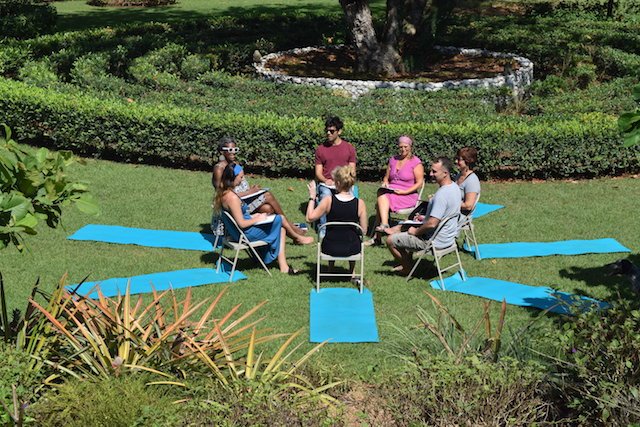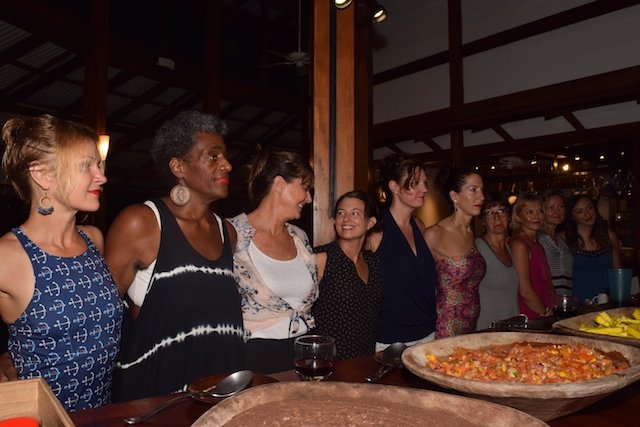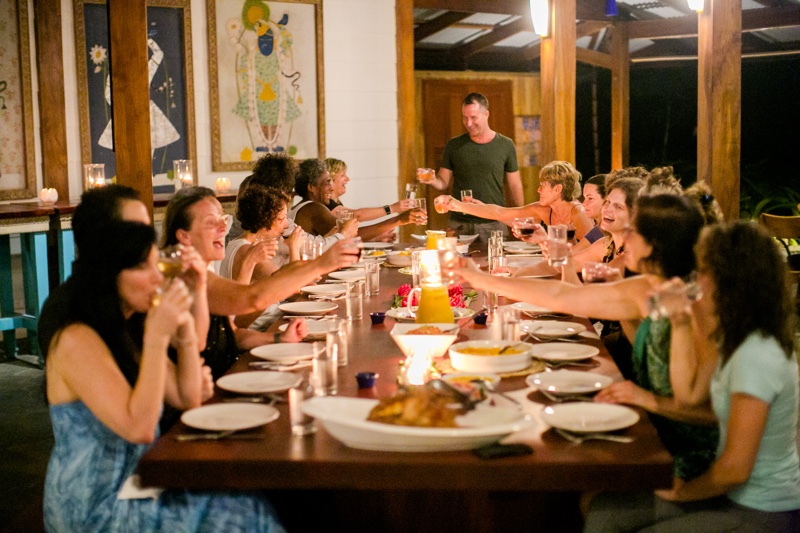Team building and corporate retreats, in general, have developed a well-deserved reputation for cheesy kumbaya campfires and drunken bonding that simply doesn’t translate when everyone is back in their suit and ties. But it doesn’t have to be that way! A new generation of corporate retreats is on the rise encompassing exotic locations (Costa Rica!), exhilarating activities (waterfall rappelling!), and worthwhile workshops (communication, anyone?), which will bring your team to new levels of cooperation and productivity.
The following is a list of Team Building Myths. We hope this list may quiet the jaded cynic within who has had to endure one too many trust-fall activities throughout the course of their career. Despite its laughable reputation, modern team building greatly increases employee engagement at work and thus employee retention. We all know how expensive it is to rehire. Invest even a quarter of that money into proven team building activities and not only will your co-workers stick around, but you’ll notice a reduction in senseless conflict and an increase in productivity.
Myth #1: Team Building Once A Year Is Enough

Hitting the gym once a year doesn’t add up to much either as many of us with well-intentioned New Year’s Resolutions can tell you. During the course of your corporate retreat your team will get the chance to work a bunch of different muscles: they’ll expand their knowledge of problem-solving, strategizing, and decision-making and they’ll come out on the other end in great emotional shape, ready to tackle whatever challenges come their way. The problem is, none of this will last without a strong commitment to practicing and reworking the skills. We wouldn’t have to have workshops if this stuff came naturally, right? After their initial corporate retreat, many companies commit to quarterly, monthly or even weekly activities to keep these skills fresh.
Myth #2: There is no Return On Investment (ROI) when it comes to team building
We live in a world where science, facts and figures win almost every time, so how do you justify a teambuilding retreat to your boss when there may not be a clear one-to-one relationship between team building and profits? If you are in a position of management where you are dealing with the day-to-day activities of your employees, consider the last time a conflict arose within your team. How many hours (how many DAYS?) of productivity were lost in the name of repairing egos or communication breakdowns? Did you feel that the conflicts were mostly due to personality clashes and different communication styles as opposed to irreconcilable differences?
Team building activities truly break down the walls between people who work together and create bridges of understanding so that things become much less personal. Groups that understand each other are more often willing to work towards common goals instead of trying to one-up each other or, even worse, make one another look bad. If you suspect your team is not working very efficiently right now, a team building retreat could have massive ROI and could truly make your job easier as a manager.
Myth #3: Everyone will emerge as best friends

The goal of team building is not to make everyone the best of friends. It is actually quite common in the workplace to get along great with someone outside of the office, but not so well once they sit down at their desk. The goal of team building activities is to build understanding and respect for diverse strengths among your fellow co-workers. If your corporate retreat is led by a good facilitator they will administer team building activities that develop and improve communication and mutual advocacy: activities that will challenge your group to function better in the workplace. They don’t have to love each other, but they do have to work well together.
Myth #4: One size fits all
The new generation of corporate retreats has made trust-falls and three-legged races a thing of the past, but not every group desires the high price tag of a luxurious spa resort in the Bahamas. In today’s start-up cultures, your co-workers might definitely feel like a fish out of water in more formal settings. Younger companies are seeking more adventurous experiences to unique and exotic locals. Retreat venues like Blue Osa in Costa Rica, offer an easily accessible location with the feeling of truly escaping it all. Your employees will not only benefit from the immersive natural experience offered by these kinds of venues, but many activities like zip-lining and jungle hiking challenges are easy to organize and instill an organic sense of bonding within the group.
Myth #5: Drinks are enough to keep the team happy

Every employee appreciates a few rounds with the crew to celebrate the end of a project or a good review from a happy client. But cocktail hour rarely leads to any tangible insights or more functional teams. It’s a mini vacation and that’s about it. Don’t delude yourself that a dinner or happy hour once a month can substitute for the substantial work that can be accomplished through team building. Focus on group dynamics first and play later. The more your group develops an understanding and appreciation for one another, the more fun they’ll have off the clock as well.
Team building is not just a trendy excuse to ditch the tie and hang out with your co-workers building cardboard boats for the day. It is substantial and proven personal development work for your employees that will absolutely increase cooperation and productivity and reduce conflict. If you’re looking for a corporate retreat locale that is off the beaten path and offers your employees some bragging rights, consider Costa Rica. There are dozens of beachfront resorts like Blue Osa in Puerto Jimenez providing exhilarating teambuilding opportunities in the rainforest, ocean or jungle along with experienced facilitators that will bring your group to new levels this year.
About The Author
Laurel Brauns is a travel writer, musician, and yoga life coach. She has lived in Costa Rica for the past two winters studying yoga and believes this country offers powerful transformative experiences to visitors who are looking to immerse themselves in nature and healthy living. She is a regular contributor to the blueosa.com blog. Learn more at lifecoachingwithlaurel.com.






